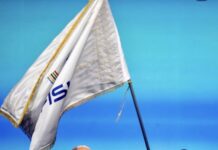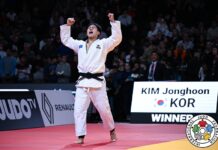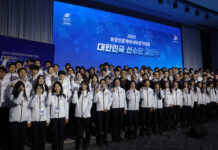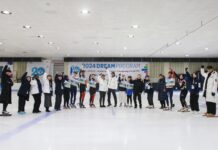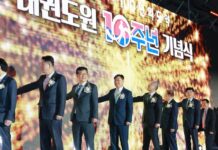
Promising Winter Olympic athletes show off the gold, silver and bronze medals during the PyeongChang 2018 Olympic Medal Unveiling Ceremony, at the Dongdaemun Design Plaza in Seoul on Sept. 21. From left are ski jumper Yang Seung-wook, short-track speed skater Nam Hyeon-yul and curler Lee Hee-seong. (Jeon Han)
By Hur SomEe and Kim Young Shin
The medals that will be presented to the winners at the PyeongChang 2018 Olympic Winter Games are designed using Hangeul Korean letters and feature elements taken from traditional Hanbok attire.
The medals are inscribed with 13 Hangeul Korean consonants: ㅍ, ㅇ, ㅊ, ㅇ, ㄷ, ㅇ, ㄱ, ㅇ, ㄹ, ㄹ, ㅁ, ㅍ and ㄱ. Those are the first letter that spell out the words “PyeongChang 2018 Olympic Winter Games” in Korean.
The Olympic flag on the face is blazoned with diagonal lines that depict the endeavor and patience of the athletes, making it look as if the 13 consonants are zipping across the disc. On the back are the PyeongChang Olympic emblem and the name of the sporting event.
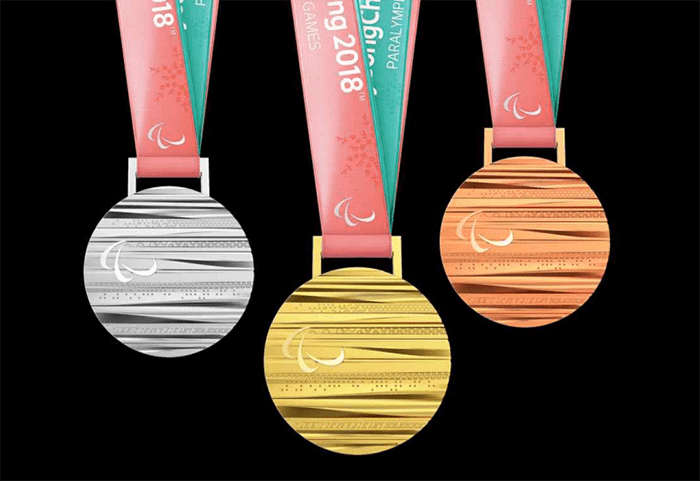
Medals for the upcoming PyeongChang 2018 Paralympic Winter Games are revealed on Dec. 11. The horizontal, grooved lines represent equality, one of the core values that encompasses the spirit of the Paralympic Games. (PyeongChang Organizing Committee)
The medals for the PyeongChang 2018 Paralympic Games are blazoned with horizontal lines that emphasize equality, the spirit of the Games.
The pattern on the face represents the clouds, mountains, trees and wind of Pyeongchang-gun County, the main host city. An agito, the symbol of the Paralympic Games, and the name of the sporting event are also marked on the medal. The circular edge of the medal is engraved with the Hangeul letters ㅍ, ㅇ, ㅊ, ㅇ, ㄷ, ㅇ, ㄱ, ㅍ, ㄹ, ㄹ, ㄹ, ㅁ, ㅍ, ㄱ, ㅇ, ㄱ, ㅇ, ㅇ, ㄹ, ㅍ and ㄹ. These are the consonants of the words “PyeongChang 2018 Paralympic Winter Games” in Korean.
The neck ribbon is made of fine gauze used for traditional Korean Hanbok attire. Snowflakes made of Hangeul letters are embroidered on the strap.
The wooden case for the medals was inspired by the gentle curves of the giwa tiled roofs found on traditional Korean Hanok buildings.
sehp91@korea.kr


